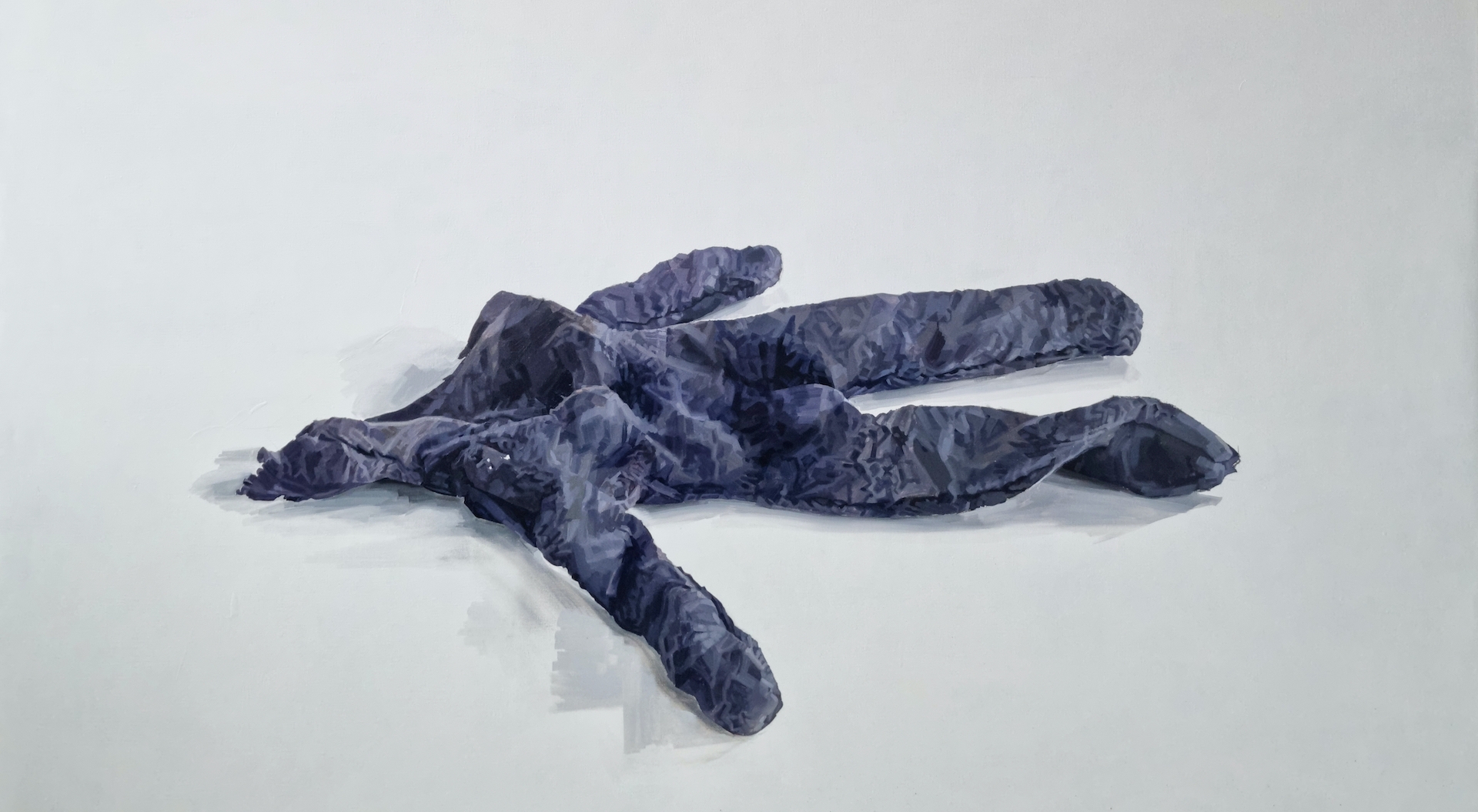In the gallery, the artists still work independently and on their own, sometimes in a hectic manner, but mostly very self-confidently. Their work, despite differences in their thinking, actions and choices of media, still, miraculously, function together as a strong whole. The powerful symbolism with which they work does not shatter, but increases this unity.
Neeme sows wedges into the walls like budding flowers, replaces the alarm button with pearls for his sweetheart, opens a cello case like a confession and fills an archaic confessional with texts from his journal. Hidden behind the declarations of love and the hints of reconciliation, he also gently establishes himself and keeps a watchful eye over the whole space. The gaze is casual but still present, because somebody has to gaze.
The unmistakable Alice, who only dares to speak about herself, transforms her paintings into the attributes of femininity, concentrating on a lone figure, on a single item, but full of tension and on a grandiose scale. Ruthlessly precise in what she is trying to show, straightforward in concealing what deserves to be hidden. Only nature is left outside Alice’s penetrating gaze: she looks at it from a distance and sees it as something bigger than herself. The dark and dreary elements can only be captured vaguely, recorded only from a distance. So complicated and, at the same time, also so simple. As sincere as possible.
“A certain uncompromising discomfort for the inevitable corporeality of human consciousness” is present in the “striking spatial-poetic ping-pong” which accompanies the exhibition of Alice Kask and Neeme Külm. These were the words of the art critic Hanno Soans a year ago and, lo and behold, they indeed still hold true.
Alice Kask (b 1976) graduated in 2002 from the master’s programme in painting of the Estonian Academy of Arts. Since her major solo exhibition at the Contemporary Art Museum of Estonian (2016), she has recently shown her works at the Helsinki Art Hall (2018) and Rüki Gallery (2020). In 2008, she had a solo exhibition in the Tartu Art Museum. Among other accolades, in 2003 she received the Konrad Mägi Award.
Neeme Külm (b 1974) graduated in 1998 from the Department of Sculpture of the Estonian Academy of Arts and studied in 2003–2005 in the master’s programme of interdisciplinary arts at the same school. His most powerful solo exhibitions took place in the first half of the 2010s and his more recent group shows have existed on the border between architecture and visual arts. Külm was one of the founders of the Contemporary Art Museum of Estonia.
The artists thank: Tamara Luuk, Kadri Villand, Johann Tanel Möldre, Lepo Külm, Berit Teeäär, Tiit Talvaru, Hilkka Hiiop and Päär Keedus.
The exhibition is supported by the Cultural Endowment of Estonia.




